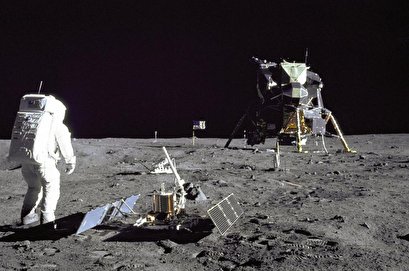TEHRAN, Jun 17 -In 1961, when President John F. Kennedy called on the United States to put a man on the moon by the end of the decade, he wasn't inspired by a curiosity about the moon's formation.
 TEHRAN, Young Journalists Club (YJC) -Kennedy felt the intense pressure of the Cold War, and in the wake of Russian cosmonaut Yuri Gagarin becoming the first human in space, Kennedy called on the United States to "catch up to and overtake" the Soviet Union in the so-called space race.
TEHRAN, Young Journalists Club (YJC) -Kennedy felt the intense pressure of the Cold War, and in the wake of Russian cosmonaut Yuri Gagarin becoming the first human in space, Kennedy called on the United States to "catch up to and overtake" the Soviet Union in the so-called space race.
"This was war by another means," Roger Launius, former chief historian of NASA, told UPI.
Today, dozens of scientific experiments regularly travel to and from the International Space Station, and each new NASA mission features an array of scientific instruments and objectives. But during the early 1960s, NASA wasn't sure if space exploration beyond near-Earth-orbiting satellites -- let alone scientific exploration of the moon -- was even possible.
"The point of Apollo 11 was to meet Kennedy's commitment," said John Logsdon, space historian and a professor of political science and international affairs at George Washington University. "Anything else that would have interfered or complicated the success of the mission wouldn't have been given priority."
Apollo 11's scientific mission, Logsdon contends, was secondary and non-essential.
"Apollo 11 went to land on the safest place on the moon," Logsdon said. "It was also, scientifically, probably the least interesting place you could go."
Mare Tranquilitatis, or the Sea of Tranquility, where Apollo 11 touched down on July 20, 1969, is one of the oldest, flattest lunar regions. For engineers, big, flat lunar plains without much differentiation are the best bet for safely landing spacecraft.
"But it's not good for collecting lots of different kinds of rocks and soil samples," Launius said.
Even if Apollo's scientific mission was secondary -- an afterthought, even -- it was still significant.
"The science was actually huge even though it was not the primary goal of the mission," said science journalist and space historian Andrew Chaikin.
In addition to setting foot on the moon, Neil Armstrong and Buzz Aldrin collected 47.5 pounds of lunar material and brought it back to Earth. The lunar samples allowed scientists to test a variety of hypotheses about the moon's formation and history.
Prior to the moon landing, there was still some debate about whether the moon was a cold fossil, a frozen relic, or a planetary body that had experienced volcanic activity.
"The Apollo 11 samples proved without a doubt that the moon had been volcanically active," Chaikin said.
There were even some scientists who argued the moon was covered in a thick layer of dust. The Apollo 11 astronauts, they predicted, would sink into the surface upon leaving the lander. The prediction, obviously, proved false.
Source: UPI
Your Comment